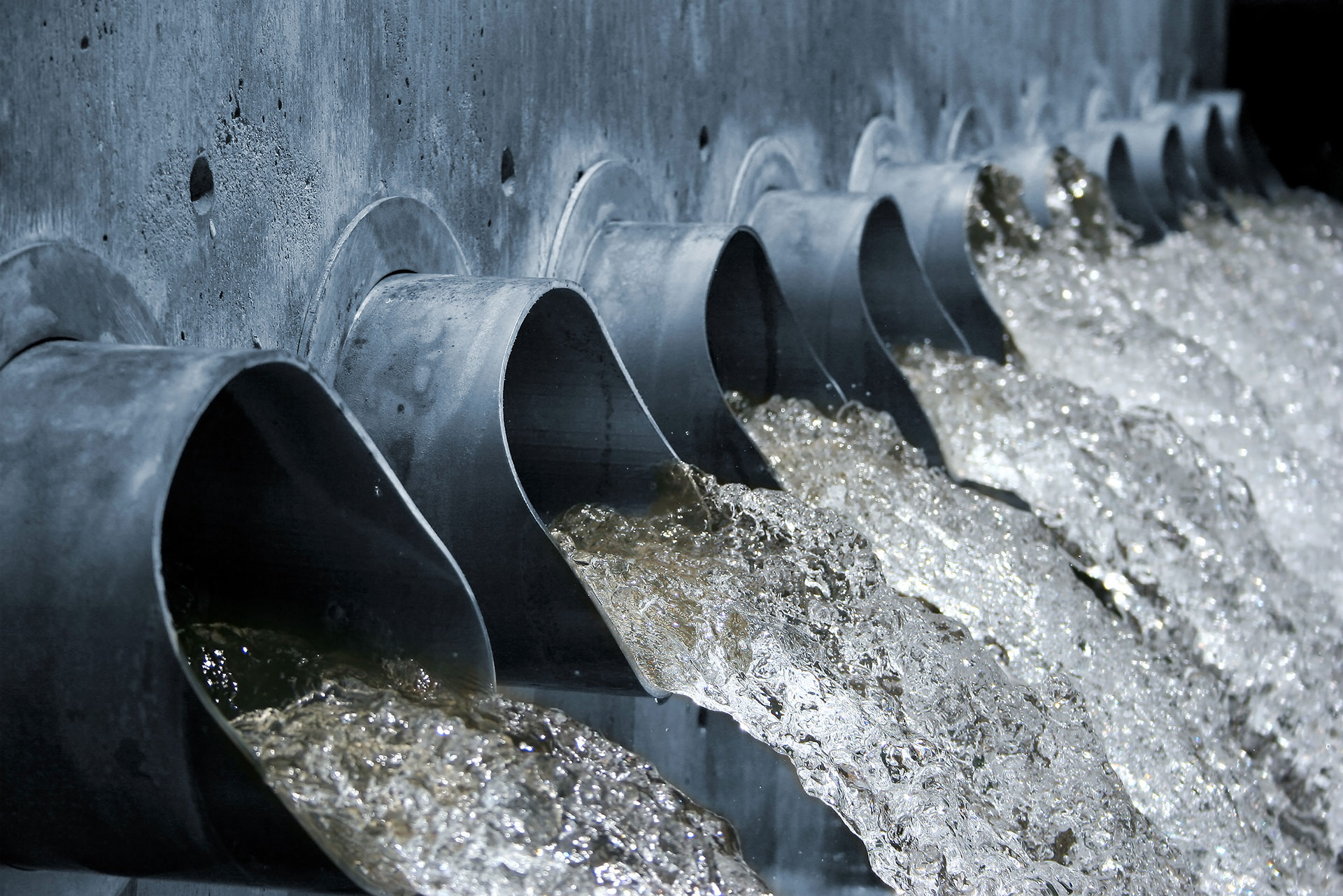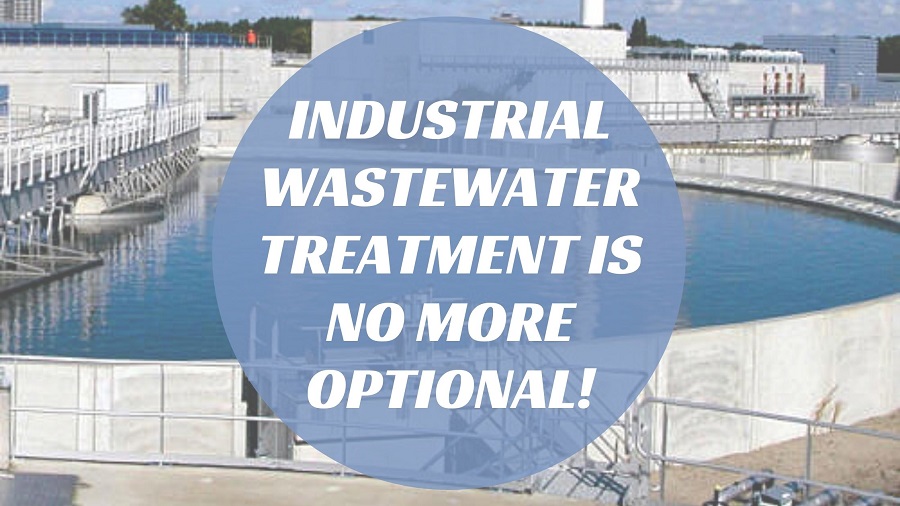Secret Strategies in Hazardous Waste Water Treatment Procedures
The treatment of commercial wastewater is a vital element of environmental management, including a variety of strategies developed to alleviate the influence of contaminants. Innovations in innovations such as membrane layer filtration and advanced oxidation processes supply innovative remedies for boosting treatment effectiveness.
Physical Treatment Methods
Just how successfully can physical therapy methods deal with the complexities of industrial wastewater? Physical treatment techniques play a critical function in the preliminary stages of wastewater management, focusing primarily on the elimination of solids and huge particulates. Strategies such as filtering, flotation protection, and sedimentation are crucial for reducing the focus of put on hold solids, consequently improving the efficiency of subsequent therapy processes.
Sedimentation entails the gravitational settling of solids, enabling for the separation of larger materials from the wastewater. This approach is especially effective in making clear water prior to biological or chemical treatments.
Additionally, flotation methods, which make use of air bubbles to lift put on hold solids to the surface area for removal, work in treating wastewater with high focus of fats, oils, and greases. Overall, physical therapy techniques offer as an essential primary step in the detailed administration of industrial wastewater, making certain that the tons on subsequent treatment stages is minimized and improving general therapy effectiveness.
Chemical Therapy Techniques
While physical treatment methods lay the foundation for efficient wastewater management, chemical therapy methods are important for addressing the a lot more complex impurities typically found in commercial effluents. These methods make use of different chemical representatives to precipitate, counteract, or oxidize damaging substances, making sure a more detailed removal of contaminants.
One common method is coagulation and flocculation, where chemical coagulants such as light weight aluminum sulfate or ferric chloride are included in advertise the aggregation of suspended fragments. This process improves solid-liquid splitting up, reducing turbidity and enhancing water quality. Furthermore, neutralization procedures are employed to change the pH of wastewater, utilizing bases or acids to neutralize acidic or alkaline streams, specifically.
Oxidation-reduction responses play a vital function in derogatory natural contaminants and microorganisms. Chemical oxidants like ozone, chlorine, or hydrogen peroxide are made use of to break down complicated natural substances, making them much less hazardous or a lot more eco-friendly. Progressed oxidation procedures (AOPs) incorporate multiple oxidation techniques to enhance pollutant elimination efficiency.
Biological Therapy Processes
The efficiency of wastewater treatment is substantially boosted by organic therapy procedures, which harness the all-natural metabolic activities of bacteria to disintegrate natural issue and eliminate contaminants. Industrial Waste Water Treatment. These processes mainly involve anaerobic and cardio food digestion, each customized for details sorts of wastewater
Cardio therapy processes utilize oxygen to support microbial development, advertising the malfunction of organic contaminants go into co2 and water. Usual techniques include activated sludge systems, where oygenation storage tanks help with the mixing of wastewater with microbes, and flowing filters, which motivate biofilm development on media surface areas.
Alternatively, anaerobic therapy processes take place in the lack of oxygen, utilizing anaerobic bacteria to decay organic matter, causing biogas manufacturing, a sustainable energy try this site resource. Anaerobic digesters are often used in industrial setups for this function, efficiently decreasing the volume of sludge while creating important biogas.
The selection of an organic treatment method relies on wastewater attributes, treatment goals, and governing standards. The assimilation of organic procedures in wastewater treatment not just improves toxin removal performance but additionally promotes sustainability by lessening chemical use and supporting source recovery.
Advanced Oxidation Processes

Common AOP methods consist of Fenton's photocatalysis, reagent, and ozonation. Fenton's reagent, a combination of hydrogen peroxide and ferrous iron, catalyzes the development of hydroxyl radicals, making it efficient for dealing with wastewater consisting of phenolic substances and other stubborn materials.
AOPs provide a number of benefits, consisting of reduced sludge production and the capability to deal with wastewater with high focus of natural pollutants. The implementation of AOPs requires careful consideration of operational parameters and cost-effectiveness, guaranteeing that these sophisticated methods are properly integrated into existing wastewater treatment systems.
Membrane Filtration Technologies

Microfiltration works for getting rid of suspended solids and Continued microorganisms, while ultrafiltration targets smaller natural particles and viruses. Nanofiltration connects the gap between ultrafiltration and turn around osmosis, properly removing divalent ions and organic compounds. Reverse osmosis supplies the highest degree of purification, made use of largely for desalination and removing mono-valent ions.
Membrane modern technologies offer numerous advantages, including low energy consumption compared to traditional treatment methods, modular design for scalability, and the potential for water recovery and reuse. However, obstacles such as membrane layer fouling and the demand for normal upkeep need to be dealt with to guarantee system efficacy. On the whole, membrane layer filtering technologies represent an essential part of contemporary industrial wastewater therapy approaches, promoting sustainability and resource preservation in water monitoring.
Final Thought
In verdict, commercial wastewater treatment uses a diverse array of strategies, consisting of physical, chemical, organic, and progressed techniques. Proceeded advancements in these techniques will better enhance the performance and effectiveness of wastewater treatment procedures in commercial settings.
The treatment of commercial wastewater is a crucial element of ecological management, involving a variety of techniques designed to reduce the effect of impurities.Just how effectively can physical treatment techniques attend to the intricacies of commercial wastewater?Advanced oxidation processes (AOPs) represent an advanced technique in commercial wastewater therapy, made to properly degrade organic pollutants that are typically immune to traditional therapy techniques (Industrial Waste Water Treatment).In final thought, commercial wastewater therapy utilizes a varied variety of methods, consisting of physical, chemical, organic, and advanced techniques. Continued improvements in these methods will certainly additionally boost the effectiveness and efficiency of wastewater treatment processes in industrial setups